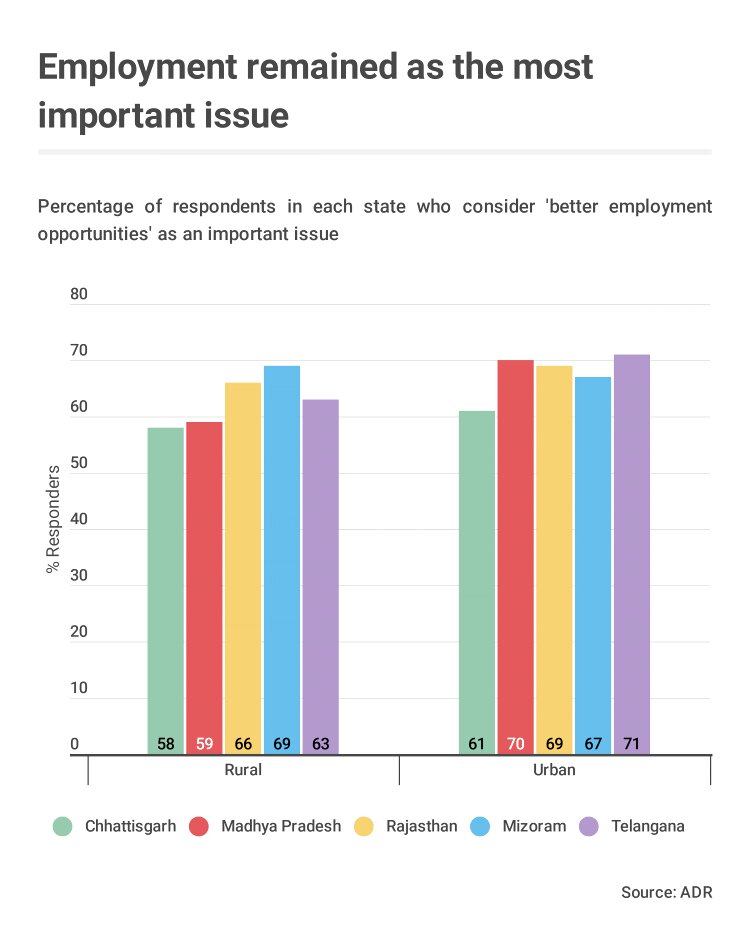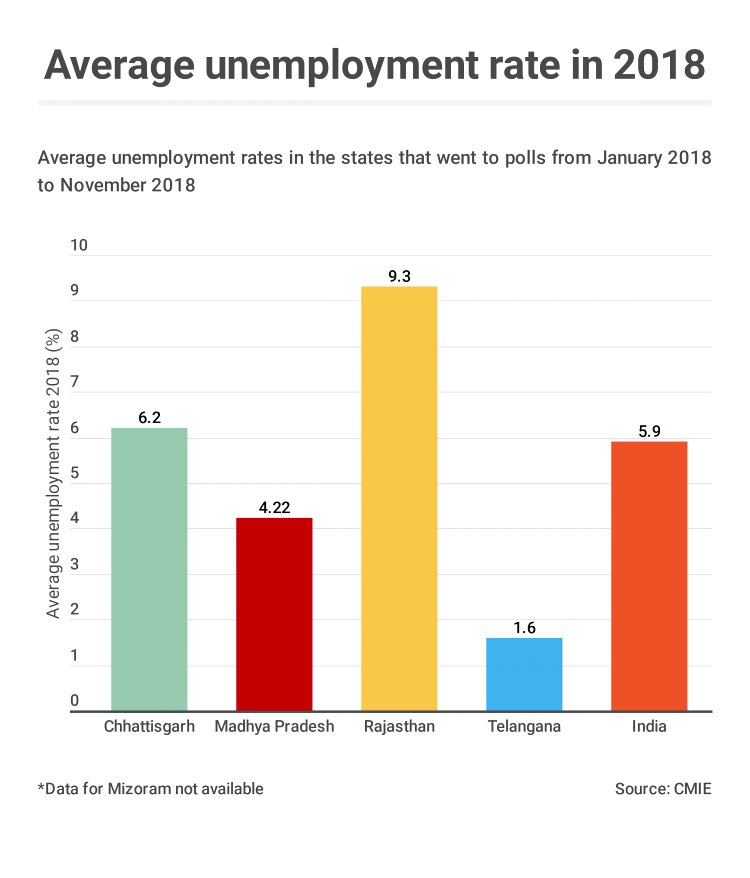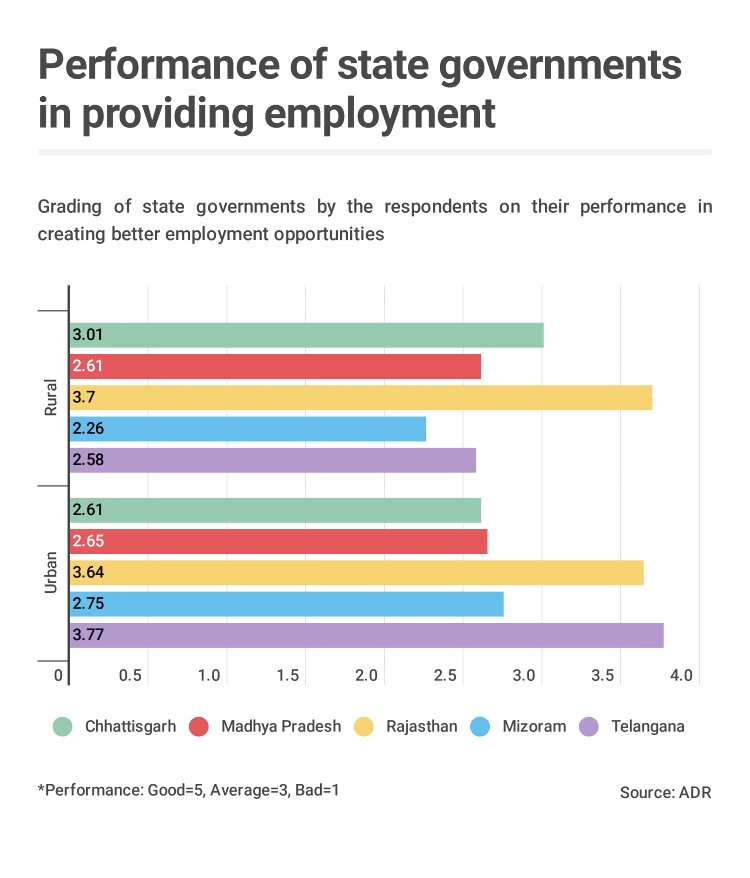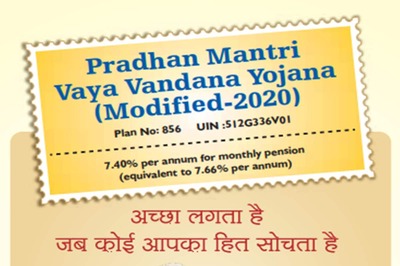
views
New Delhi: It’s been two weeks since the Bharatiya Janata Party (BJP) on December 11 suffered a major setback in its dream-run of consecutive electoral wins when it lost power to Congress in Madhya Pradesh, Rajasthan and Chhattisgarh. Though the party put up a decent show battling the anti-incumbency in MP and Rajasthan, it was virtually wiped out in Chhattisgarh.
While the poor performance by the BJP is attributed to the agrarian crisis, which the Congress is believed to have cashed in on through its promises of loan waivers, a recent survey by the Association for Democratic Reforms (ADR) on ‘voter behaviour’ suggests that lack of job opportunities played a major role in bringing the Congress back to power.
According to the ‘ADR 2018 Pan-India Survey Report of Governance Issues’, a survey conducted by the non-governmental organisation on voter behaviour, ‘better employment opportunities’ was the most important issue for the voters in the five states that went to polls in November and December.
In rural constituencies for instance, employment was the most important issue for 66 per cent of the voters in Rajasthan, 59 per cent of the voters in MP, 58 per cent in Chhattisgarh, 69 per cent in Mizoram and 63 per cent in Telangana.
Similarly, in urban constituencies, 69 per cent of the voters considered employment/jobs as the priority issue in Rajasthan. It was the most important issue for 70 per cent, 61 per cent, 67 per cent and 71 per cent in MP, Chhattisgarh, Mizoram and Telangana, respectively.

According to the Centre for Monitoring Indian Economy (CMIE) data on unemployment, among the states that went to polls over the last month, Rajasthan had the worst average unemployment rate of 9.3 per cent in 2018 (as of November) which is way above the national average of 5.9 per cent. This is followed by Chhattisgarh where the unemployment rate was 6.2 per cent, MP where the rate was 4.22 per cent and Telangana at 1.6 per cent.
According to Major General Anil Verma (retd), head and national coordinator of ADR, while there were several issues which led to the success of Congress to cause a power change in the Hindi heartland states, unemployment was one of the major ones.
“There are a large number of issues because of which the Congress has won in these states but the fact remains that unemployment has always been the number one requirement of the common man… There was anti-incumbency and of course the agrarian crisis was a major thing but there is no denying that employment is a big factor,” he said.
When asked to rate their government for its performance on employment front, respondents in all the states, both rural and urban alike, rated it as average or below average, except in Rajasthan, and Telangana’s urban constituencies, where they rated their government a little over average.
It is this disenchantment of the electorate with their governments on employment issues in addition to the agrarian crisis that appears to have cost the BJP its three major states, which are crucial to its 2019 strategy for general elections.

The Congress, though lost power in Mizoram due to similar concerns among the voters, has nevertheless seen a sort of a revival riding on the employment issue. The gains have undoubtedly been much greater for Congress than the losses.
In Chhattisgarh for instance, Congress saw a significant jump in its seats tally going from 39 in 2013 to 68 in 2018. The party almost doubled its seats in the semi-urban constituencies and nearly tripled its numbers in urban constituencies. Its vote share in the state increased from 41.6 to 43.9 per cent, while the BJP came down to 33.6 per cent from 42.3 per cent.
Similarly, in MP Congress doubled its seats where BJP suffered huge losses as well. In Rajasthan also, BJP came down from 163 seats in 2013 to 73 seats in 2018, facing a loss of 90 seats in total, where Congress rose from 21 seats in 2013 to 99 in 2018.
The fact that even after a significant unemployment rate in the state voters rated the Rajasthan government’s performance as above average may have been the reason why the BJP performed relatively well compared to what political pundits were expecting.

In the current analysis, Telangana could be seen as a state where the Telangana Rashtra Samithi (TRS) reaped benefits of performing well in terms of job creation and providing.
TRS nearly doubled its seats in the urban constituencies from 9 seats in 2013 to 19 in 2018, where the respondents in the survey rated the government above average on employment opportunities. The party also fared well in rural and semi-urban areas, going from 45 to 58 seats and 9 to 11, in these constituencies respectively. Its vote share also saw a sharp rise from 34.3 per cent in 2013 to 47.4 per cent in 2018.
TRS-led government’s several initiatives like the Telangana Academy for Skill and Knowledge (TASK), Women Entrepreneurs Hub and its IT Policy Framework, etc., to provide skills training and create jobs and an unemployment rate of just over one per cent seemed to have worked for TRS.
















Comments
0 comment